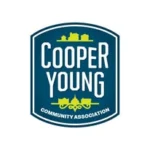In the 1970s, local preservationists and authors Peggy Jemison and Virginia Dunaway embarked on a project for the Metropolitan Interfaith Association (MIFA) to document the histories of eight historic Memphis neighborhoods, including Cooper-Young. Published in 1980, their work was the first real history of the area, which at the time was in a state of decay.
Thirty years later, with the neighborhood having undergone a dramatic transformation, writers Lisa Lumb and Jim Kovarik updated the earlier work for the book Cooper-Young: A Community at Works: A History, published by the Cooper-Young Community Association.
In the fourth in a series of excerpts from the book, this month we explore another of Cooper-Young’s iconic homes and the role that medical professionals played in Cooper-Young at the turn of the last century.
It is hard to over-emphasize the importance of the good public transportation system that helped develop Cooper-Young and that still serves the neighborhood. While much of this land was suburban acreage in 1887, a small steam railroad constructed at a cost of $150,000, called the East End Railway or “dummy line,” chugged its way from Monroe and Third, out Madison to the East End Park, a pleasure resort on the north side of Madison not far from present day Overton Square. It turned south on Cooper, making stops at Lenox, which was an incorporated town until 1909, and then on to Fleece Station where there was a little shed to keep people out of the rain. Before Cooper was paved, there was an elevated trestle all down Cooper. The engine turned east on Young to Montgomery Park, where horseracing flourished until 1905 when the General Assembly outlawed betting in Tennessee.
The Tennessee Derby originated at Montgomery Park in 1884, and it quickly became a great attraction. The streetcar changed the whole atmosphere of Cooper-Young, making the neighborhood a popular commercial center. During the racing season, the streetcars would sometimes pull trailers to carry the oversized crowds. When they had heavy traffic, one car after another would line up like taxis today.
By 1905, this line, other independent lines to the city and suburbs, and the Memphis and Raleigh Springs lines were purchased and consolidated as the Memphis Street Railway. The Commercial Appeal records the $4 million modernization program that replaced the streetcars with “up-to-the minute trackless trolleys” in 1947. The Fairground route remained the same for the new buses, and it continues today.
Though not located in Cooper-Young, the East End Park was nearby on Madison Avenue and it had lovely attractions that were well-attended by Cooper-Young residents at the turn of the century. Many residents had pleasant memories of special evenings there. As early as 1895, operas and dramas were performed by visiting companies. One very popular one that year was “Arabian Nights.” Vaudeville acts, such as Madam Irwin, “the Iron-Jawed Wonder of the Nineteenth Century,” entertained Memphians. The Commercial Appeal reported that more than 1,500 persons were at the East End Park to see Professor Charles Raymond ascend in a balloon and make a daring leap when the balloon was 2,000 feet high. It was also the first public dance hall where “Memphis’ nicest people gathered in the Chrysanthemum Ballroom Monday night to trip restrainedly to the strains of Strauss waltzes and the refined melodies of the latest hits of Victor Herbert’s operettas.” Big celebration took place on special days like the Fourth of July and Labor Day.




